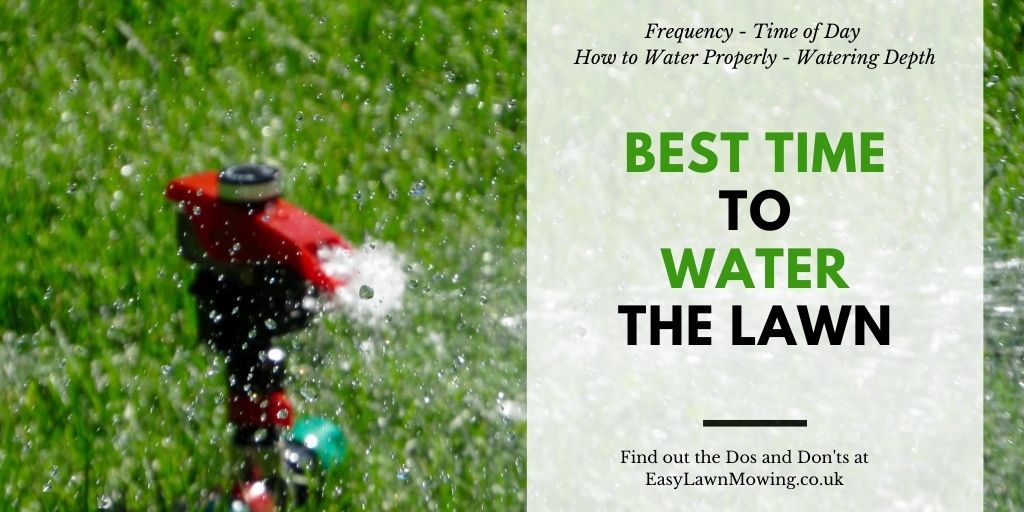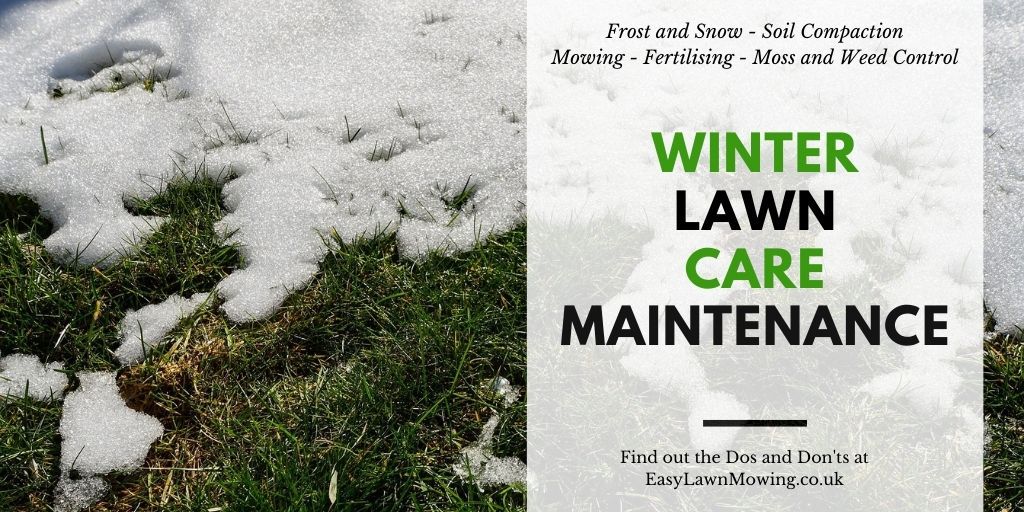
To keep your lawn looking its best, it’s important to understand how to properly water it. While it may seem simple enough to just sprinkle some water over it whenever you feel like it, there are actually a few key things to keep in mind.
Firstly, it’s important to know the best time to water your lawn. Watering during the hottest part of the day can cause the water to evaporate before it has a chance to soak into the soil, while watering at night can lead to fungal growth. So when is the best time to water? I’ll be discussing this and more in this article, as well as providing some extra tips for maintaining a healthy lawn.
Key Takeaways
- Proper watering is crucial for a healthy lawn.
- Watering at the right time of day is important to ensure the water is absorbed properly.
- Following best practices for watering can prevent serious lawn problems.
The Best Time To Water The Lawn
Weekly Frequency
When it comes to watering your lawn, there is no one-size-fits-all solution. The frequency of watering depends on several factors, including the type of soil, grass, and weather conditions. However, in most cases, it is recommended that you water your lawn every three days each week, no more than twice. If you have clay-based soil, you can water your lawn once a week, while those with sand-based soil should water every three days.
It is essential to examine your lawn before watering it to determine its moisture level. If the soil is still moist, there is no need to water it. During dry conditions, you may need to increase the frequency of watering, while wet conditions require less watering.
The Time Of Day
The best time to water your lawn is in the morning, before the sun rises. This allows the grass to absorb the water before it evaporates. Ideally, you should water your lawn between 6 am and 10 am. Avoid watering in the afternoon or evening as the water will evaporate too quickly during the day and promote fungus and disease if left overnight.
How To Water Properly

To ensure that your lawn’s roots grow deeper into the soil, making them stronger and more resistant to disease, you should water deeply and infrequently. Watering a little every day will promote fungus and disease, just like watering at night.
The amount of water your lawn needs depends on the type of soil you have. For clay-based soil, you should give it about 1cm of water each time, while sand-based soil requires about 2cm of water each time.
To determine how long your sprinkler needs to water for, you can use a rain gauge. Place the gauge in the middle of the sprinkler’s spread and time how long it takes to reach the required measurement. A regular jar can also be used to mark off the measurements.
Watering Depth
To ensure that the water is penetrating the soil deep enough, you should test the watering depth. Using a long screwdriver, mark off 15cm, which is the depth of a healthy root system. While the sprinkler is on, push the screwdriver into the soil as deep as it can go every 15 minutes. When it goes in easily, it means that the soil is well-watered. Time how long it took the sprinkler to reach the 15cm depth.
By following these watering guidelines, you can keep your lawn consistently moist and healthy. Remember to adjust your watering schedule based on the weather conditions and examine your lawn regularly to determine its moisture level. With patience and practice, you can learn to understand your lawn’s specific watering needs and keep it looking lush and green all year round.
Some Extra Tips
Use a Pulsating Sprinkler With a Timer
When it comes to watering your lawn, it’s important to choose the right tools for the job. A pulsating sprinkler with a timer is an excellent choice for a number of reasons. Firstly, the high velocity of the water ensures that it is less vulnerable to wind and evaporation than other types of sprinklers. Secondly, the timer allows you to shut off the water supply after a set period of time, which is especially useful if you have a busy schedule or want to conserve water. With a pulsating sprinkler and a timer, you can ensure that your lawn receives the right amount of water without wasting any.
Let the Water Soak In If Your Soil Is Dry and Hard
If you’ve recently experienced a period of dry weather and your soil is dry and hard, it’s important to water your lawn in stages. This will help to soften the ground and make it easier for the water to reach the roots. Start by watering for a shorter period of time than usual, and then wait for the water to soak in. Once the water has had a chance to soak in, water again for the same amount of time. This will ensure that your lawn receives the right amount of water without wasting any.
Preparation For Dry Weather

If you live in an area that experiences periods of drought, it’s important to take steps to prepare your lawn for these conditions. Firstly, make sure that you kill any weeds or moss that may be present in your lawn, as these can take up valuable water. Secondly, fertilise your lawn before the dry weather arrives to help it withstand the conditions. Finally, raise the cutting height on your mower to prevent excessive water loss. If you take these steps, you can help to ensure that your lawn stays healthy and green even during periods of drought.
In addition to these tips, there are a few other things that you can do to help conserve water and keep your lawn looking its best. For example:
- Use an irrigation system with a flow timer to ensure that your lawn receives the right amount of water.
- Water your lawn in the early morning or late evening, when temperatures are cooler and there is less chance of evaporation.
- Use in-ground sprinklers instead of hose-end sprinklers, as these are more efficient and waste less water.
- Choose drought-tolerant grass varieties that are better able to withstand dry conditions.
By following these tips, you can help to ensure that your lawn stays healthy and green all year round, even during periods of dry weather.
FAQ – Best Time To Water The Lawn
When is the best time to water my lawn?
In the morning, between 6am and 10am.
Can I water my lawn at night?
Not advisable - water will sit there for hours promoting lawn disease.
How do I keep my lawn in top condition?
You will need to mow, fertilise and water it regularly. You will also need to manage and control any weeds and disease.
Why do I have waterlogged lawn?
If your soil is compacted the water will not able to drain through the soil resulting in waterlogged lawn.
If you found this post interesting then maybe you’d like to see some of my other garden related articles and tools to help you get the job done, visit easylawnmowing.co.uk
As a seasoned expert in the field of garden power tools, I have dedicated over a decade to working with and reviewing a wide variety of lawn mowers. My extensive experience has allowed me to gain a deep understanding of the benefits and limitations of different types of mowers and garden tools.
Over the years, I have honed my skills in writing informative articles and creating helpful videos for various blogs and publications. This has given me the ability to not only recognise what makes a good lawn mower, but also to help you choose the perfect garden tool for your specific needs and requirements.
With my wealth of knowledge and expertise, I am confident that I can provide you with valuable insights and recommendations when it comes to selecting the right lawn mower for your lawn. So, whether you're looking for a battery cordless, electric, petrol, or robotic mower, you can trust in my expertise to guide you towards the best option for your garden.








I don’t live in the UK, but the information I am sure can be used pretty much anywhere. I often wondered how deep the water should soak in and I love the screwdriver test. This seems like an easy way to check the water depth into the ground. I have St. Augustine grass and live in a very warm, humid climate. Do you know how often this type of grass needs watered? Do I just go by your guide about the color change in the grass and/or springiness?
Yeah these grass will be a little different than the ones we have over here in the UK but the ways you can use to tell when they need watered are the same. There isn’t really a better method between the two as both are as effective as the other, it’s entirely up to your preference and what one you feel most comfortable using.
Thanks for the comment and if you have any more questions then please let me know ;-)
Thank you for posting this interesting article Mark. I have always been very careful about how I water my tomatoes, I have never paid much attention to my lawn.
I have 2 questions. In this area we have a lot of lime stone structure very close to the surface. Sometimes only at a depth of a few inches. How would that affect how I might want to water?
Next, I have 3 areas in my yard that apparently hold water much better than the rest of it. These areas stay greener longer and the grass grows thicker and faster than elsewhere. How would I deal with that in a watering plan?
I’m glad you enjoyed it Frank! The limestone shouldn’t make too much of a difference, the only reason you want the water to penetrate deeper than a few inches is to reach the very bottom of the roots to make them grow deeper and stronger. But seeing as yours won’t be able to grow any deeper than this because of the rock, I would just water to where the limestone structure begins. So you probably won’t have to water for as long as most other people but you should still use the screwdriver test to work out how long this will be.
And in order to deal with your patches, I wouldn’t actually make any changes to your watering schedule at all, these are clearly in good growing conditions and you don’t want to do anything to tamper with that. Instead I would actually focus on the poorer areas, clearly something is wrong with them and you should put in some time to figure that out. If you want some help then check out a post I wrote on Lawn Repair, it takes you through a range of lawn problems and how you should go about fixing them.
Hopefully these help and if you’ve got any more questions then please feel free to ask ;-)